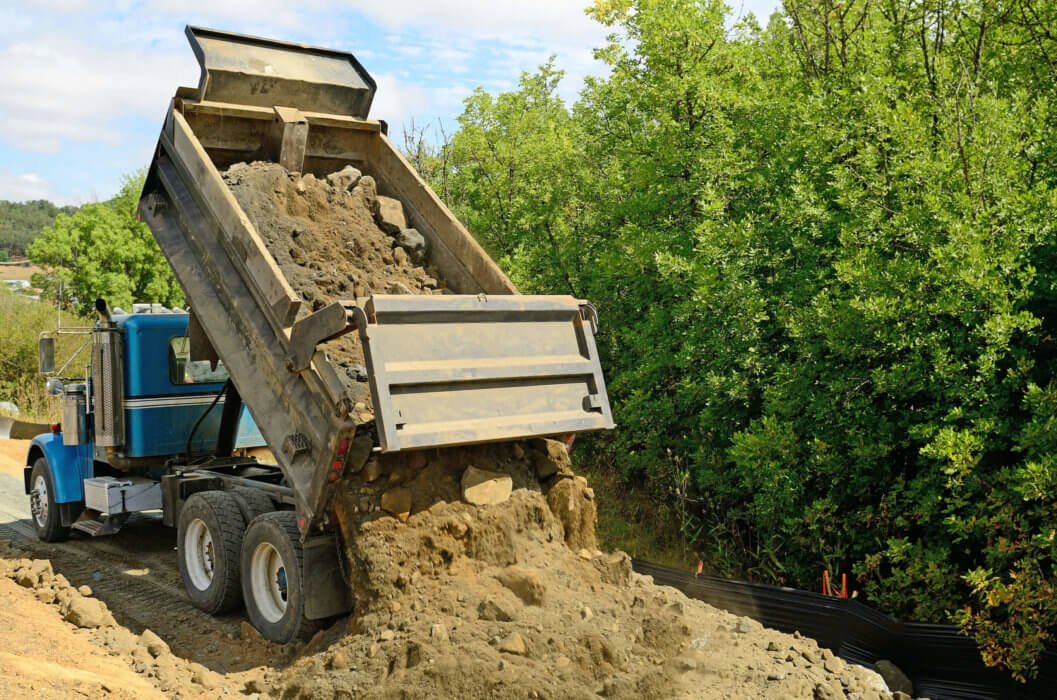In March 2018, the daily newspaper La Presse revealed that organized crime had infiltrated the contaminated soils disposal and transport industry. The Naphthalene investigation, led by the Sûreté du Québec, reportedly found that hundreds of thousands of tons of heavily contaminated soils from construction sites located in the Montreal area were illegally released into the environment.
This situation had already been denounced by contaminated soils treatment centers which had seen an inexplicable decline in the volumes of soils supplied to them.
The Naphthalene investigation lasted more than two years and considerable efforts were devoted to it by the investigators. False documents forged by a software developed for that purpose and suggesting that the soils had been sent to premises authorized to manage them were found by the police and 80 illegal dumping sites were identified as well.

Unfortunately, no charges have been laid against the polluters as Crown prosecutors have concluded that the current regulations make conviction for them unlikely.
Despite everything, the investigation and indignation raised by this decision in the industry certainly contributed to the pressure, which led the government to publish, in the Gazette officielle du Québec, the new Regulation respecting the traceability of excavated contaminated soils.
Published on July 7, 2021, this regulation put in place measures including monitoring contaminated soils excavated by GPS and entering these soils into a computer system before transport.
It is very likely that the regulation will have a significant impact on how the excavated contaminated soils will be managed as part of an insurance claim that involves the environmental rehabilitation of a land.
Thereby, the new regulation provides as follows:
- The owner of contaminated soils or the person responsible for the discharge or a person authorized by the latter must fulfill the obligations provided for by the regulation;
- Registration in the computer system must include the identity of the owner of the soils, the person responsible for the discharge or the authorized person and the identity of the person responsible for the place where the soils will be sent. This final inspection must precede the dispatch of the contaminated soils, at least 72 hours ahead, if the receiving site is not already registered in the system;
- Any transport of soils must be recorded in a tracking slip, which must contain the following: the coordinates of the place of origin, the name and address of the authorized person if applicable, the name and address of the owner or the person responsible for the discharge, the concentrations of the concerned contaminants, the quantities of soils transported and the coordinates of the receiving site;
- A notice regarding the total estimated quantities of soils to be transported must be sent to the Minister before the departure of the first trip;
- When the estimated tonnage will be greater than 200 tons, an attestation prepared by an authorized person, specifying that all the transport of excavated contaminated soils has been the subject of a tracking slip, must be sent to the Minister no later than 15 days after the last transport;
- The authorized person must be a professional or have a post-secondary science degree, not be the excavator or one of its employees and not be the person required to fill out or having completed the tracking slips;
- When a transport greater than 200 tons of contaminated soils is planned, the transporter of these soils must also use a device compatible with the computer system provided by the Minister. This device will be transmitting, throughout the duration of the transport, the geographic position of the soils, even if it is unloaded outside of Quebec.
The regulation came into force on November 1, 2021. Until December 31, 2021, it only applied to the transport of soils over 5,000 tons. Since January 1, 2022, it applies to the transport of more than 1,000 tons of soils and from January 1, 2023, it will apply to any transport of excavated contaminated soils covered by the regulation.
If you have any questions about the impacts of this new regulation, please do not hesitate to contact our Environmental Team.
